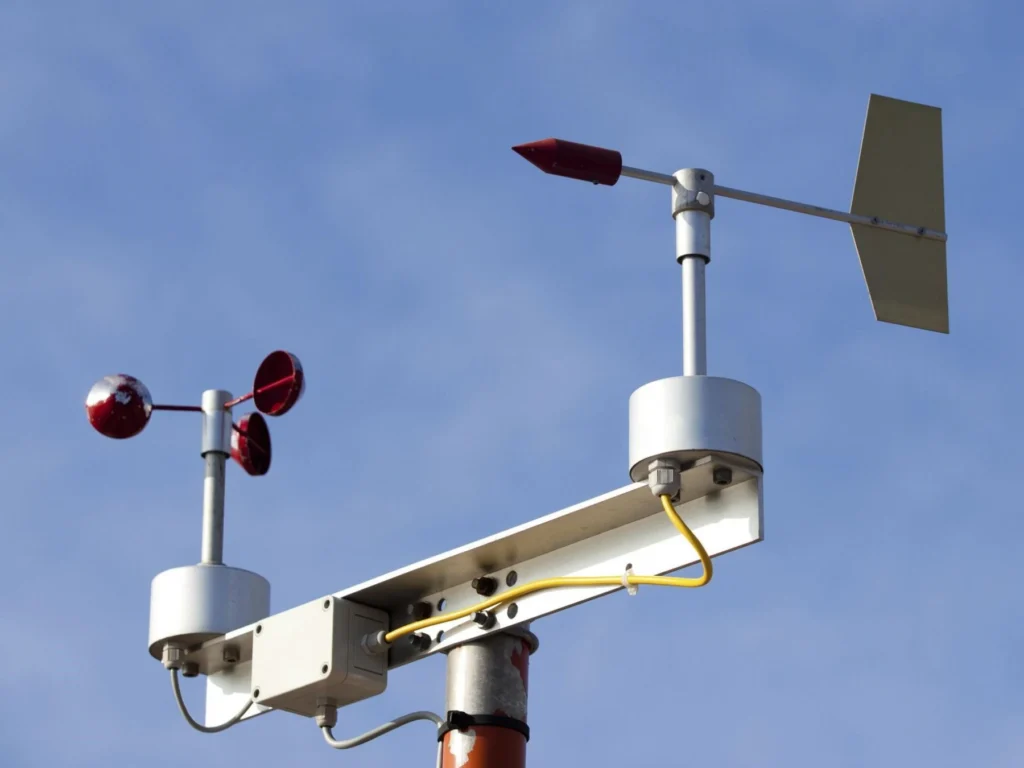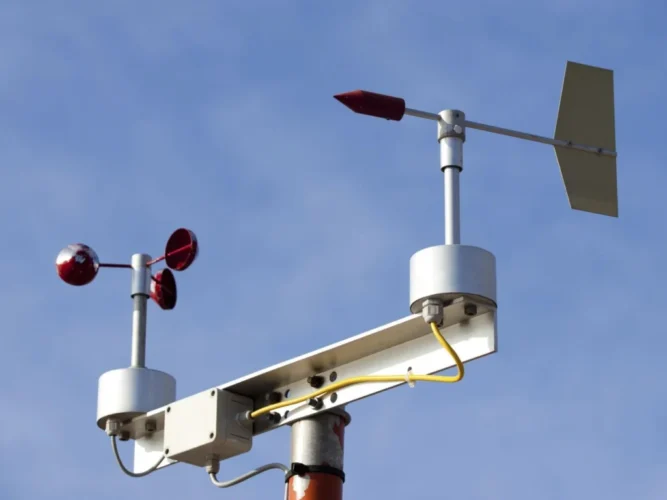
# Anemometer: The Instrument for Measuring Wind Speed
Wind speed is a crucial parameter in various fields, from meteorology to aviation, and even in renewable energy. To accurately measure this vital element, scientists and engineers rely on a specialized instrument known as the anemometer. This device has become an indispensable tool for understanding and predicting weather patterns, ensuring safe air travel, and optimizing the performance of wind turbines.
## What is an Anemometer?
An anemometer is a device designed to measure the speed of wind. The term “anemometer” is derived from the Greek word “anemos,” meaning wind, and “metron,” meaning measure. These instruments come in various forms, each tailored to specific applications and environments.
### Types of Anemometers
There are several types of anemometers, each with its unique mechanism for measuring wind speed:
– Cup Anemometers: The most common type, featuring three or four cups mounted on horizontal arms. As the wind blows, the cups rotate, and the speed of rotation is proportional to the wind speed.
– Vane Anemometers: These devices combine a wind vane with a propeller. The vane aligns with the wind direction, while the propeller’s rotation speed indicates the wind speed.
– Hot-Wire Anemometers: Utilizing a heated wire, these anemometers measure the cooling effect of the wind on the wire to determine wind speed. They are highly sensitive and often used in laboratory settings.
– Ultrasonic Anemometers: These advanced devices use ultrasonic sound waves to measure wind speed and direction. They are highly accurate and can operate in harsh weather conditions.
## Applications of Anemometers
Anemometers are used in a wide range of applications, each requiring precise wind speed measurements:
– Meteorology: Weather stations use anemometers to gather data for weather forecasting and climate studies.
– Aviation: Airports employ anemometers to monitor wind conditions, ensuring safe takeoffs and landings.
– Renewable Energy: Wind farms utilize anemometers to assess wind resources and optimize the placement and operation of wind turbines.
– Environmental Monitoring: Researchers use anemometers to study wind patterns and their impact on ecosystems.
## How to Use an Anemometer
Using an anemometer is relatively straightforward, but it requires careful handling to ensure accurate readings:
– Choose the Right Type: Select an anemometer suitable for your specific application and environment.
– Calibration: Ensure the device is properly calibrated before use to guarantee accurate measurements.
– Positioning: Place the anemometer in an open area, free from obstructions that could affect wind flow.
– Data Collection: Record the wind speed readings at regular intervals, noting any changes in wind direction or speed.
## Conclusion
The anemometer is a vital instrument for measuring wind speed, playing a crucial role in various industries and scientific research. By understanding the different types of anemometers and their applications, we can better appreciate the importance of this device in our daily lives. Whether you’re a meteorologist, pilot, or renewable energy enthusiast, the anemometer is an essential tool for navigating the complexities of wind and weather.
Keyword: instrument to measure wind speed
